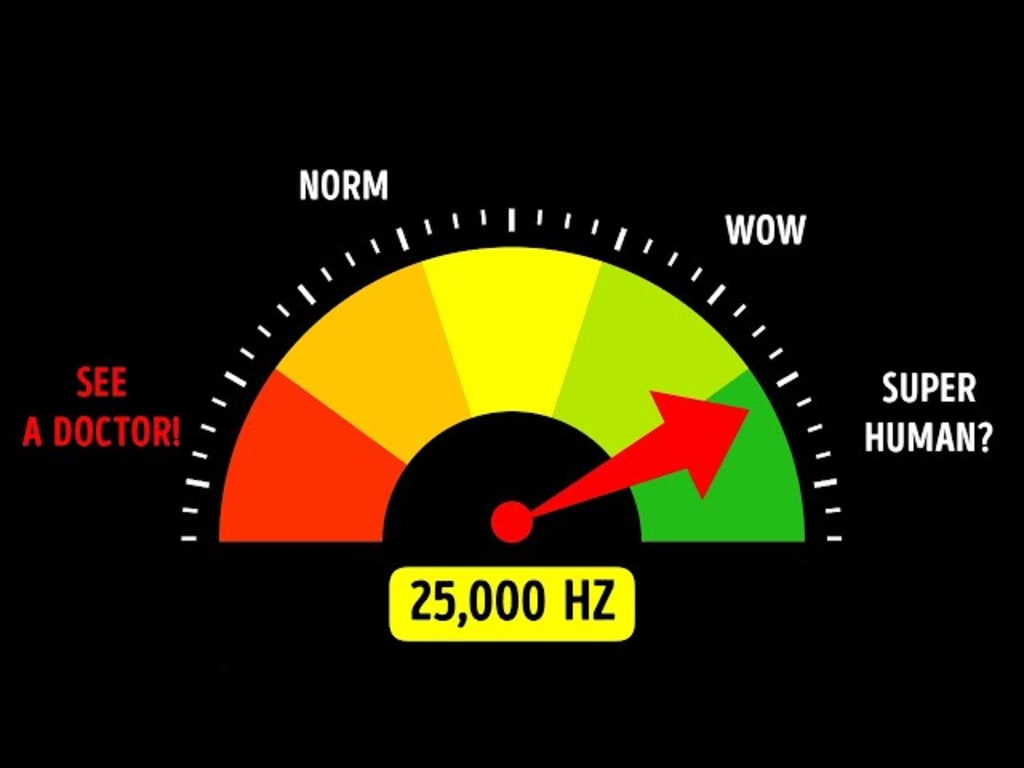
Picture yourself leisurely walking down the iconic Fifth Avenue in the heart of New York City, surrounded by the hustle and bustle of urban life. Suddenly, amidst the cacophony, you hear an enigmatic rumbling. Instinctively, you attribute it to the subway, but a revelation strikes – the subways are out of service for the day. The persistent rumbling is accompanied by a swooshy, dense sound, reminiscent of underground water flowing. In this fantastical scenario, your ears possess a magical attunement to the deep movements of Earth's tectonic plates, granting you the extraordinary hearing range of an elephant.
Ordinarily, human hearing is confined to a range between 20 Hertz and 20,000 Hertz, allowing us to perceive anything from a low bass note to the subtle buzzing of a mosquito. In our youthful prime, especially during childhood, our hearing might extend to an astonishing 24 kHz. However, as the sands of time sweep across our lives, this auditory prowess diminishes, with older individuals sometimes hearing frequencies as low as 8 kHz.
Sounds that vibrate beyond the scope of human hearing are classified as ultrasonic or infrasound. In this hypothetical scenario, the elusive rumbling of tectonic plates serves as a perfect example of infrasound. But what exactly is sound, and is it conceivable for humans to dream of expanding their hearing range beyond the ordinary?
At its core, sound is vibration – a wave that necessitates a medium to propagate. Whether traversing through air, gas, or liquid like water, sound relies on a medium for its journey. A startling revelation arises: if oxygen were to vanish from Earth's atmosphere, we would retain the ability to speak but lose the profound sense of hearing. The absence of a medium for sound waves to travel through would render us unable to hear one another. Such is the intricacy of the auditory world we often take for granted.
Life, it seems, is not confined to sounds perceptible to human ears alone. Animals often possess wider hearing ranges, offering them a rich tapestry of acoustic experiences. Dogs, for instance, can discern sounds up to 45 kHz, while cats, with their feline finesse, can detect frequencies as high as 60 kHz. The world, by its very nature, is noisy, and our brains are meticulously designed to selectively focus on sounds crucial for survival.
While human hearing may appear limited on the surface, delving into the depths of the underwater realm unveils a fascinating expansion. Above ground, our hearing capacity is capped at 20 kHz, yet underwater, humans can parallel the hearing range of a bat, reaching approximately 100 kHz. Scientists attribute this phenomenon to the varying dynamics of sound travel through water and the intricate mechanisms by which our ears receive and interpret these sounds.
Embarking on an internal journey through our ears reveals a complex system at play. The outer part acts as a funnel, capturing vibrating wavelengths and directing them to the inner ear. The eardrum, a crucial intermediary, receives these sound waves, activating tiny bones connected to the cochlea. Resembling the shell of a snail, the cochlea houses hairs that vibrate in response to sound frequencies. Unfortunately, these hairs do not possess the ability to regenerate, contributing to the inevitable hearing loss experienced in old age.
The exploration of underwater hearing capabilities opens up the captivating prospect of humans harnessing echolocation, akin to the capabilities of dolphins. Dolphins, renowned for their intelligence, emit clicking sounds to navigate underwater, employing a form of sound-based navigation known as echolocation.
While humans may not possess the ability to hear ultrasonic sounds akin to elephants, we are susceptible to infrasounds – vibrations below 20 Hz. Prolonged exposure to infrasounds from sources like wind turbines or crowded stadiums can inflict damage upon our delicate auditory apparatus. Interestingly, natural phenomena, such as avalanches, generate infrasounds that could potentially be detectable if our hearing extended beyond the conventional range.
In conclusion, the boundaries of human hearing, both fascinating and limiting, beckon us to delve into the symphony of sounds that envelop our lives. Whether navigating the vibrant streets of a metropolis or plunging into the unfathomable depths of the ocean, the auditory world continually captivates and challenges our understanding of the sonic realm. The symphony of sound remains an enigmatic and ever-evolving masterpiece, inviting us to listen, explore, and appreciate the intricate nuances of our auditory experiences.





Comments (1)
This article is fantastic—I appreciate its well-crafted and informative nature.